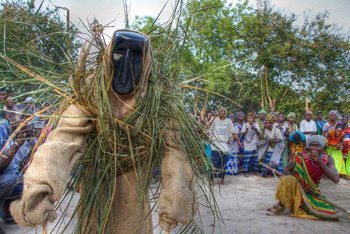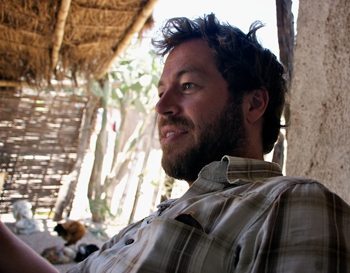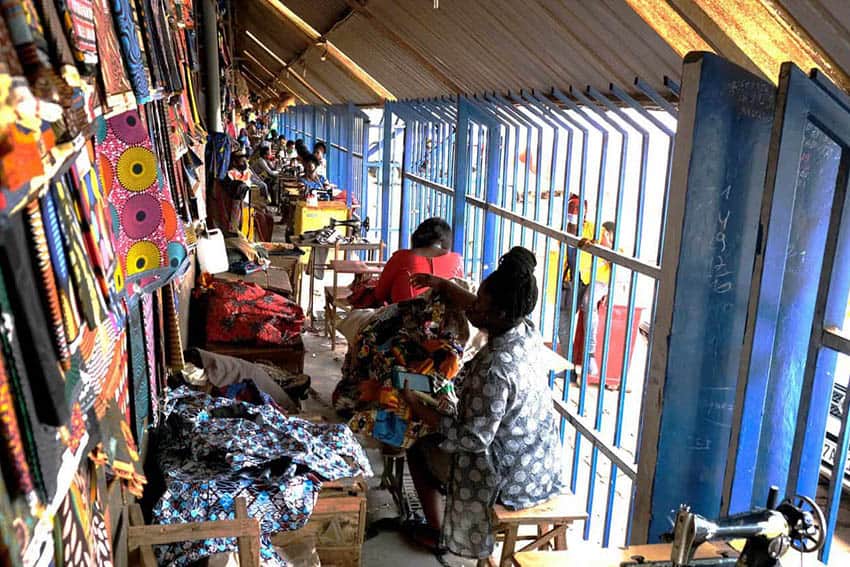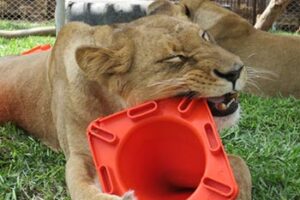Senegal: Traditional Beliefs, Voodoo, and Witchcraft in the Casamance
By Simon Fenton
Gris-gris

I live in Abene, a village in the Casamance region of southern Senegal, where you do not need to scratch far beneath the surface to find traditional animist beliefs.
This is a land of genies, spirits, and spells. Almost everybody wears a gris-gris (a Voodoo amulet) for spiritual protection.
West Africa was animistic before Islam and Christianity showed up at the party, and as in the rest of the continent, many of the traditional beliefs were absorbed and maintained within the new religions.
It’s not difficult to understand why the Abrahamic religions gained a foothold. Both Christianity and Islam offer Africans an afterlife, whereas traditional beliefs aren’t so clear cut, offering only the world of spirits and ancestors.
Although I’ve read that some Senegalese don’t agree with gris-gris — they still believe they work but see them as blasphemous against God — I’ve yet to meet them.
Everyone I know wears them and there’s a gris-gris for every occasion: to find a lover, to become pregnant, for protection, and even very strong ones that will protect you from knife or bullet wounds.
Senegal Koranic Script

The gris-gris is a perfect fusion of new and old. Koranic script blessed by a Marabou and then wrapped tightly and sewn into a piece of leather and worn on a specific part of the body.
The strength depends on the strength of the Marabou. A Grand Marabou, a skinned black cat, and a small fortune could buy you invisibility.
I was recently asked to wear a new gris-gris to protect me for a flight home to the UK and I’ve seen men work themselves into a trance and then stab and cut themselves with knives, only to be protected by their gris-gris.
Bus Rollover
In fact, once I was the only person unhurt when my bus rolled over on a local journey, which was of course attributed to the power of my gris-gris, although I didn’t like to ask why those of the other passengers hadn’t worked.
Incidentally, following that crash, a local marabout (witch doctor) pronounced I’d have children in Africa. One year, to the very day, my son was born in Abene village.
It’s quite difficult to find information about such beliefs. Africa is very dark and there are some things I can never understand. Gris-gris are very personal and one shouldn’t discuss them too much or else your enemy may prepare a counter-gris-gris. The important thing for me to be mindful of is, whatever my beliefs, most Africans believe they work and, like a placebo, this belief does make them work.
Witchcraft is certainly not a joke here as you can’t laugh at what you fear. People do whither away and die or fall ill when they know a gris-gris has been cast against them, as they know it’s true and that it works. I have seen people becoming lethargic and changing personalities when they enter a house where gris-gris have been cast against them.
The Konkouran in Senegal
Have you ever seen the movie the Village?
Embarrassingly, it was the first film I screamed out loud in the cinema since watching Jaws 2 at the age of 8. In the movie, there are scary scenes of villagers barricading themselves into their houses as “monsters” prowl around outside.
I never thought I’d live through the same experience myself. I had gone to the village center to buy some provisions. I watched a procession of local older women dancing in formation to the beat of drums and there was a strange atmosphere in the air, an air of nervousness.
As the low rumble of fear spread through the neighborhood, I saw people running and then I saw it. A flash of red as a hairy creature ran between two buildings. Fat-Fat (quick quick) cried my partner, Khady, as several adults and about 20 children ran into a house and barricaded ourselves indoors.
Often, this is a playful creature that chases kids around. Parents warn them that the Konkouran will get them if they’re naughty. But this was not a good Konkouran – this was hitting people.
There was genuine terror and when I went to peer at it through the window, I was dragged back into the darkness.
For a while now, I’ve been trying to figure out what the Konkouran is and why it terrorizes people. I presumed it was ceremonial and wouldn’t actually hurt someone. I made to go out and look and it was at that point, a French friend had some sharp words with me – “you have Khady and a baby, don’t be stupid”.
“But I know karate” I replied like an idiot.
“Ok, well just so you know, a tourist was severely beaten up a couple of years back and the Konkouran have machetes. The police won’t do anything, nobody will do anything. You are part of the community now so you have no excuse. You need to take these things seriously”.

Then the Koumpo arrived – or rather three Koumpo. A Koumpo is a dancer, covered in reeds, that can twirl like a crazy tumbleweed and elongate itself to 10 feet tall.
Later N’Yass arrived, an Ewok like monkey devil, and Gomala, the black ape. If the kids were scared of the Koumpo, they were positively terrified of these creatures which chased them with sticks.
Later, Khady asked if I’d been scared of the Koumpo, as I’d gone close to take a picture.
“Well it’s just a dancer isn’t it?”
“You think so? No, I don’t think it’s possible. It’s from the forest. How can it be human? This is Africa, it’s very dark. We cannot understand everything”.
One of the family heads was the personal doctor to the Gambian president. He collaborated that the Koumpo was a forest spirit.
I wasn’t quite sure if they were serious or having a laugh at my expense. Later on, back in my home of Abene, Senegal, I heard that a friend, Papis, had organized a Koumpo dance for a tour group. I went along, thinking it would be a toned-down tourist version, but although it was on a much smaller scale, the dance was the same.
I showed Khady some photos later. In one, a man’s face was clearly visible amongst the reeds. She was most disturbed as the Koumpo is not a man, but a forest spirit of which one should be afraid. Maybe this man didn’t believe and the Koumpo ate him, she suggested.

Simon Fenton is a British writer/photographer living in Abene, Senegal.
- The Wild Mississippi: 2340 Miles Across Ten States - April 8, 2024
- Exploring the Floating Villages of Tonle’ Sap Lake - April 3, 2024
- Woman Traveling Solo on Turkish Buses - March 27, 2024






hi, is Papis actually Malik the kora player?